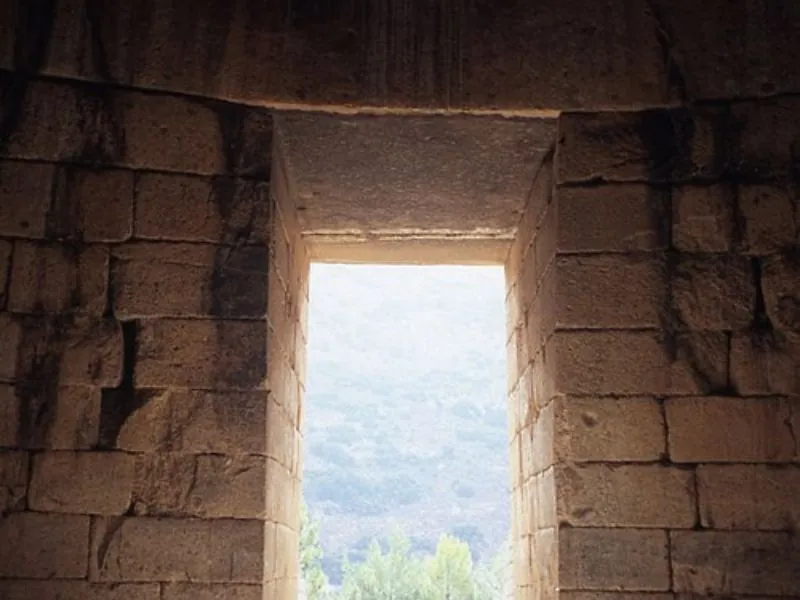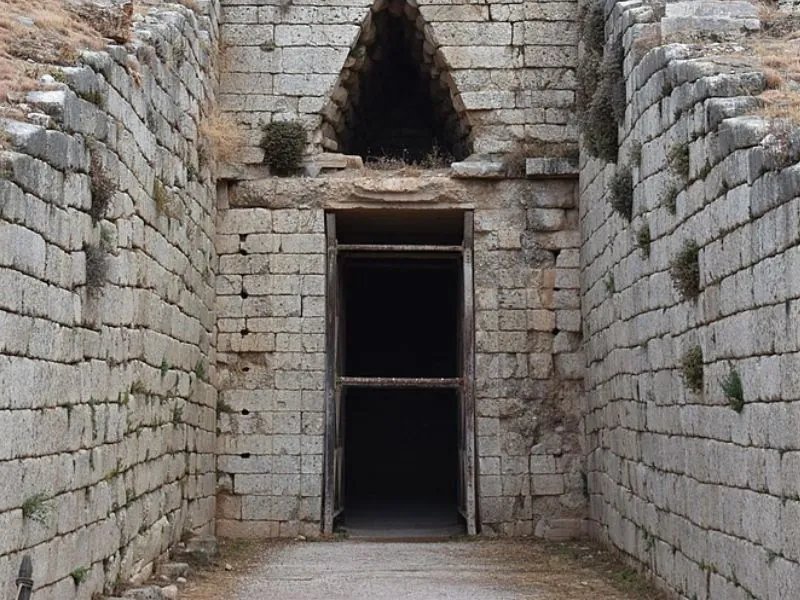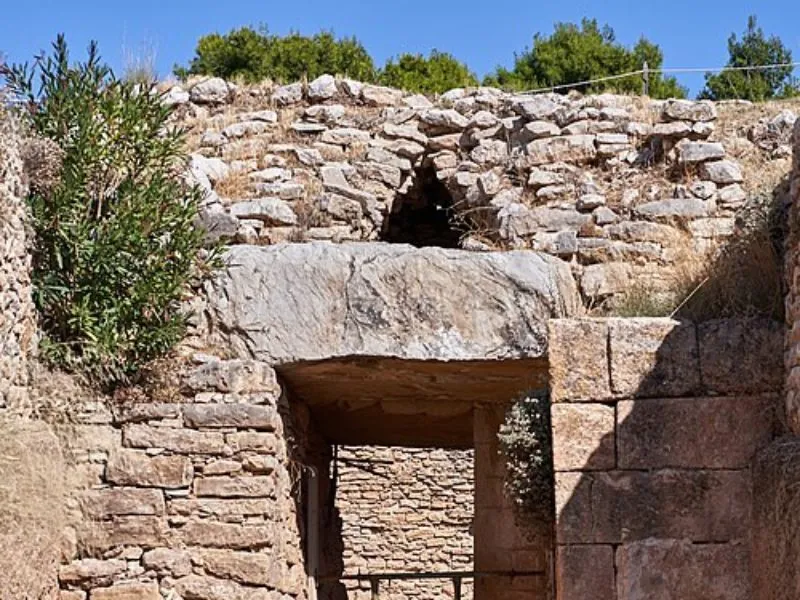
Stride 500 m south-west of the Lion Gate and an ashlar-lined passageway draws you toward the Tholos Tomb of Clytemnestra in Mycenae. Raised around 1250 BCE, this huge beehive (tholos) was one of the last royal tombs built at the citadel—and with its fluted half-columns and 13 m-high corbelled dome, it competes with the Treasury of Atreus for sheer spectacle. Whether it held Homer’s murderous queen, Agamemnon himself or no one at all, the monument still proclaims the power of late Mycenaean rulers.

Tholos tombs replaced earlier shaft graves c. 1500 BCE as elite families sought ever-grander resting places. Nine such tombs ring Mycenae; the Tholos Tomb of Clytemnestra in Mycenae is the youngest, dating to LH IIIB (~1250 BCE). Its construction coincides with the final enlargement of the citadel walls—evidence that palace engineers were simultaneously fortifying the living and monumentalising the dead.
A 35 m processional dromos, its walls perfectly coursed in reddish conglomerate, funnels visitors to a 5 m-high doorway (stomion). The façade once gleamed white beneath a coat of plaster; twin gypsum half-columns, vertically fluted and capped with ornate capitals, framed the entrance—motifs later echoed on classical treasuries and Roman temples.
Above the 80-ton lintel a gaping relieving triangle lightened the load and originally carried a painted relief, perhaps in vivid reds and blacks.
Inside, the circular burial chamber spans 13.4 m and rises 13 m. Each ashlar ring is gently curved, continuing unbroken around the dome at lintel level—an innovation slightly more advanced than that of the older Treasury of Atreus.
Sunlight slipping through the doorway catches tool marks on blocks that were sawn, not hammer-dressed, proof of late-period finesse.
A carved channel beneath the threshold drains rainwater, its stone cover supported by miniature corbels—a tiny reminder of the engineering that stabilises the giant roof above.

Moving tens of thousands of tonnes of stone demanded palace-level logistics: quarrying conglomerate nearby, dragging blocks on sledges greased with olive oil, and ramming earthen ramps to set the lintel.
Rows of curved stones continuing at lintel height tie the structure together and hint that builders were experimenting toward true arches. Architectural historians credit the semi-column façade as a prototype for later Greek antae and Roman engaged columns.
Local tradition names the tomb for Clytemnestra, Agamemnon’s wife and eventual killer. Pausanias, however, placed her grave outside the walls “as unfit for honour”.
Some scholars propose that the Tholos Tomb of Clytemnestra in Mycenae honored Agamemnon himself; others argue it was never used, abandoned when Mycenae fell to destruction in the later 13th century BCE. The empty, looted chamber offers no bones to settle the question, leaving visitors to weigh legend against archaeology.
Fragments of the gypsum columns, painted relief chips and weapon shards survive in the National Archaeological Museum, Athens.
The tomb’s façade faces the Argive plain, advertising power to every caravan approaching from Corinth. Its pairing of conglomerate with showy limestone mirrors citadel architecture, tying the ruler’s immortality to the living palace.
By the mid-13th century BCE these soaring monuments functioned less as private graves and more as public billboards of dynastic legitimacy.

Whether it cradled Clytemnestra, Agamemnon, or remained eternally empty, the Tholos Tomb of Clytemnestra in Mycenae endures as a masterclass in Late-Bronze-Age engineering and PR.
Its half-columns preview classical artistry; its unbroken dome keeps watch over the Argolid after 3,200 years. Stand beneath the vault, feel the weightless hush, and you grasp how Mycenae’s rulers fused myth, power and stone into architecture that still commands awe today.